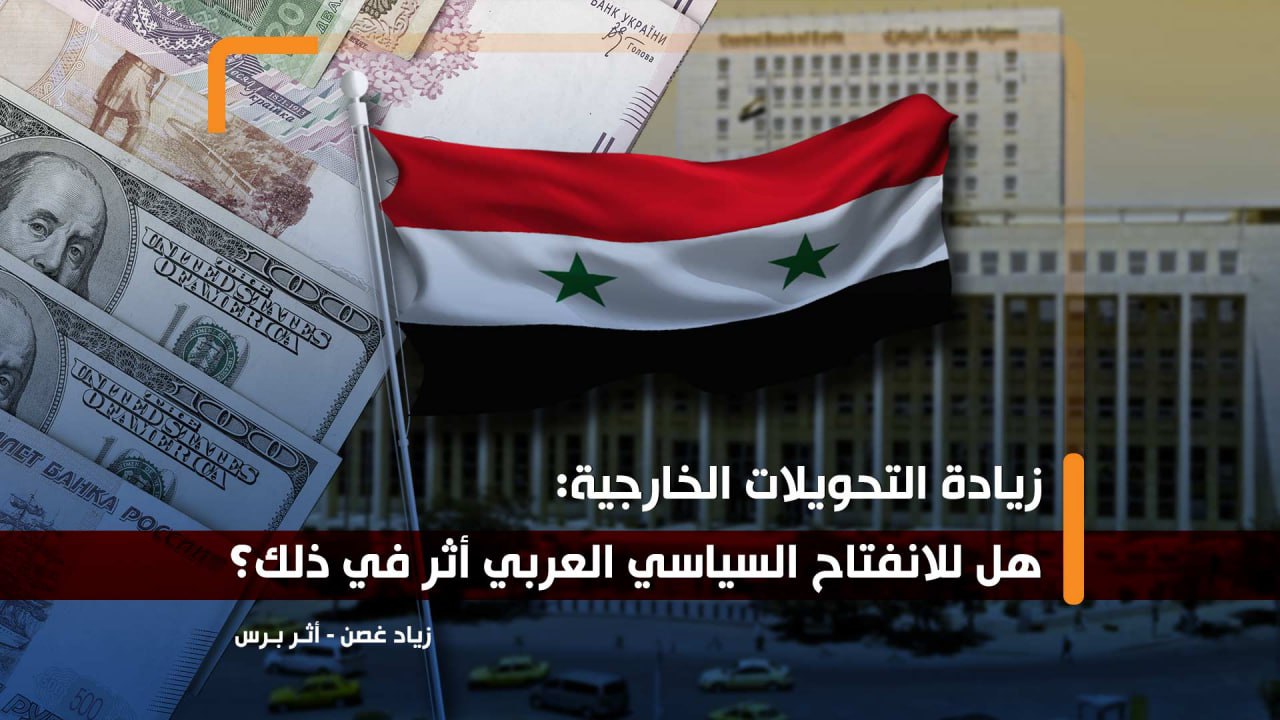During the onset of Ramadan this year, the Syrian Lira has shown a notable stability in its exchange rate, achieving a convergence between the official and market prices. Economists attribute this improvement primarily to the increase in foreign remittances, a departure from the norm of the past years. Interestingly, this period contrasts sharply with the same time last year when the exchange rate experienced significant fluctuations, particularly post-Eid al-Fitr. This variance prompts a series of questions: What has caused the increase in foreign remittances this year? And how have Syria’s improved relations with Arab states, especially the Gulf countries, influenced these changes?
Factors Behind Growth:
My research into the dynamics of foreign remittances during the years of conflict, especially post-2013, highlights two main factors. First, the diaspora’s growth—Syrians living abroad as immigrants and workers, now numbering over one and a half million outside the Arab region, has significantly impacted remittances. This expatriate community, engaged in diverse global workplaces, contributes regularly, albeit intermittently, to their homeland, reflecting on the political scenario back home.
Secondly, there’s an observed increase in the value of remittances sent by expatriates, particularly those in the Gulf. Driven by Syria’s challenging economic situation, many have expanded their financial support to include a broader circle of family and relatives. Dr. Abed Fadliyeh, a professor at the Faculty of Economics, University of Damascus, notes that the surge in remittances during Ramadan, Eid al-Fitr, and other festive periods is a historic trend, bolstered by the increased number of Syrians abroad due to the conflict. However, this surge in remittances does not translate to a long-term appreciation of the Lira but offers a temporary cushion against foreign exchange losses.
Impact of International Relations:
The actual value of financial remittances remains speculative, as the Central Bank has not released recent data. Moreover, a significant portion of these remittances flows through informal channels, making it difficult to assess their full impact. Dr. Fadliyeh points out that estimates on the volume and size of these remittances are at best speculative, arrived at through logical and objective assessments rather than hard data.
The question arises: has Syria’s renewed diplomatic ties with Arab nations, notably the Kingdom of Saudi Arabia, facilitated an improvement in financial inflows? While political relations between nations undoubtedly influence economic exchanges, several factors, including U.S. sanctions on Syria, restrict this dynamic. However, Syria’s re-engagement with certain Arab countries has likely had a positive effect, as these states exert control over financial transactions that can now flow through regular channels.
In conclusion, the interplay between political openness and economic stability, as evidenced by Syria’s experience, underscores the complex relationship between diplomatic relations and financial flows. While obstacles remain, the positive trajectory suggests a potential pathway to economic recovery through regional collaboration.
This article was translated and edited by The Syrian Observer. The Syrian Observer has not verified the content of this story. Responsibility for the information and views set out in this article lies entirely with the author.


